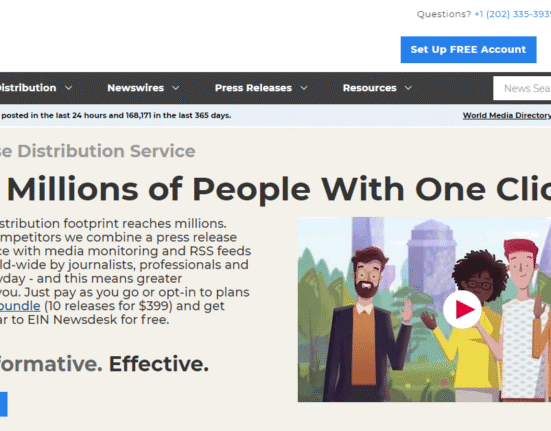Twenty anime projects. Partnerships with the studios behind “Dragon Ball” and “Demon Slayer.” An international digital platform claiming the top revenue spot in Japan’s competitive app market. Webtoon Entertainment isn’t just adapting to the anime boom — it’s engineering it.
The digital comics platform has revolutionized how the world reads comics through its mobile-native vertical scroll format, and now it’s making an unprecedented push into anime production. With partnerships with industry titans like Aniplex and Toei Animation, Webtoon is positioning itself as a major player in an anime streaming market that Wall Street research firm Bernstein projects will reach $16 billion by 2030.
“Anime is more popular than ever,” says Yongsoo Kim, chief strategy officer and head of global at Webtoon Entertainment, fresh from the company’s debut at Anime Expo earlier this month. “There’s a strong crossover between anime, webcomic and manga fandoms. We’ve long seen the potential for webcomics in anime, and have been slowly developing more anime in recent years.”
The timing couldn’t be better. Netflix recently shared that 50% of their members now watch anime, while streamers like Crunchyroll, Disney+ and Prime Video are all investing heavily to expand their anime libraries. Meanwhile, Webtoon’s Japanese platform Line Manga ranked No. 1 in revenue across Japan’s entire app market in Q1, claiming over half the webcomic market share in the country.
Webtoon’s anime strategy builds on recent successes like “Viral Hit,” “Tower of God” Season 2, “True Beauty” and “Senpai Is an Otokonoko.” With plans to develop 20 anime projects this year, the company is currently working on high-profile collaborations including “Omniscient Reader’s Viewpoint” with Aniplex and Crunchyroll, and “Gosu” with “Dragon Ball” and “One Piece” creators Toei. Just before Anime Expo, Webtoon unveiled anime adaptations for “Teenage Mercenary” and “Eleceed,” both based on popular action webcomics.
The selection process is driven by fan engagement: when a series gains billions of views globally, the company knows there’s appetite for adaptation. “‘Teenage Mercenary’ performed phenomenally on Line Manga, ranking as the No. 1 title in both 2023 and 2024,” Kim notes. “Popularity, great storytelling and what fans love are always going to be important parts of how we decide which projects to adapt.”
Rather than competing with established anime giants, Webtoon sees itself as expanding the ecosystem. “That’s not how we think about developing new projects,” Kim explains. “We’re adding to this landscape, bringing in fresh, new content to build fandoms alongside established IP. Everyone loves ‘One Piece.’ So for us, it’s more about delivering something fans can love, joining the incredible storytelling and franchises that have been foundational for anime.”
Webtoon’s competitive edge lies in its mobile-native format and global creator ecosystem. With 26 million creators releasing 124,000 new episodes daily, the platform has fostered what Kim calls “a unique pipeline of stories to adapt into any format, including anime.” The vertical scroll format, originally designed for mobile consumption, translates surprisingly well to animation.
“Our content is naturally suited for anime adaptations,” Kim says. “Our platform makes stories from all over the world more accessible than ever, and our vertical scroll format opens up new and unique visual storytelling opportunities on a continuous vertical digital canvas that translates perfectly into anime.”
This mobile-first approach resonates particularly with Gen Z audiences, who are driving anime into mainstream pop culture. “Twenty years ago, anime was hard to find in the U.S. The fandom was niche. Today, that’s completely changed,” Kim observes. “You see it on TikTok and across social media, it’s in Fortnite, and the manga that inspired popular anime now dominate bookshelves all over the U.S.”
Webtoon’s success in Japan — historically manga’s homeland — represents a significant achievement for the Los Angeles-headquartered company with Korean origins. Line Manga’s dominance in the Japanese market demonstrates the platform’s ability to win over traditional manga fans, a feat that required careful cultural navigation.
“Just like any market we enter, we have to prove ourselves,” explains Sinbae Kim, chief growth officer of Line Digital Frontier. “We have to offer content people will enjoy, and deliver a platform experience that makes it easy for consumers to find and read our content. And we have to create a compelling opportunity for local creators in order to grow the ecosystem.”
The company has invested strategically in Japan’s creative ecosystem, including a partnership with Japanese webcomic and manga studio No. 9 Inc. earlier this year. “Ultimately, we want to work with partners that are passionate about creating great, high-quality content,” Sinbae Kim notes. “We worked with Studio No. 9 to develop popular webcomics like ‘Savior of Divine Blood’ and ‘I am the Strongest Transcendent,’ which we’ve gone on to localize into different languages for fans all around the world.”
Successfully reformatting traditional manga for digital consumption has been key to bridging cultural gaps. “Mobile devices are now where people consume most of their content, so it’s a natural transition for some manga or comic art to move from print to digital,” Sinbae Kim explains. “When reformatting stories to the vertical scroll format, we take great care to ensure that the story and its images flow naturally for a seamless and fluid reading experience.”
Recent successes include digital adaptations of “Fullmetal Alchemist” and “From Old Country Bumpkin to Master Swordsman,” which have attracted millions of views since their webcomic releases in May. “For a reader, they’re still reading ‘Fullmetal Alchemist,’ it’s just in a digital format now,” Sinbae Kim notes.
The company’s approach to multimedia adaptations is methodical. “We look for two important things when exploring adaptations and building new franchises: a great story and an existing audience,” Sinbae Kim explains. “We have a massive library of truly unique stories from all over the world that come with millions of passionate fans. Having an existing, built-in audience is incredibly important in any entertainment business.”
Anime represents just one facet of Webtoon’s entertainment ambitions. The company has already adapted over 900 titles across the past decade, resulting in more than 100 streaming series and films, more than 200 books and over 70 games. “Helping fans enjoy more of what they love is a core part of our business,” Yongsoo Kim explains. “And anime is just one part of our entertainment business.”
Recent successes include Netflix adaptations like “Sweet Home” and “The 8 Show,” demonstrating the platform’s ability to generate IP across multiple formats. With Studio N in Korea and Webtoon Productions in Hollywood, the company is positioned to bring adaptations “in every format to all of our global regions,” Kim says.
The platform’s technology advantage extends beyond content creation. “We’re continuously enhancing our AI recommendation models to personalize each reader’s experience,” Sinbae Kim notes. “We recently rolled out a significant product overhaul that makes it easier to find content tailored to your interests, which includes AI-powered personalized recommendations, animated trailer-style content previews and enhanced keyword-based search.”
Looking ahead, Webtoon sees potential for the webcomic format to evolve beyond static images. “We believe the webcomic format could be enhanced with visual effects, sound and more – turning the experience into a more immersive format,” Yongsoo Kim suggests.
At Anime Expo, Webtoon hosted the first-ever U.S. signing appearance by S.I.U. (Slave.In.Utero), the legendary creator of “Tower of God,” whose webcomic was adapted into two seasons of anime. The event symbolized the platform’s growing influence in the anime ecosystem and its message to the industry.
“The takeaway here is clear — Webtoon is creating new opportunities for manga creators in digital formats, helping fuel the boom in anime production and bringing digital manga to new fans around the world via mobile webcomics,” Yongsoo Kim says.
As the anime market continues its explosive growth, Webtoon’s bet on webcomic-to-anime adaptations represents a fundamental shift in how IP is developed and distributed. With billions of engaged readers, a global creator ecosystem and strategic partnerships with anime’s biggest studios, the platform is well-positioned to shape the next phase of anime fandom.
“As webcomics become a growing source of IP for anime, more anime fans will look to Webtoon to see what stories will inspire the next hit anime,” Yongsoo Kim says. In a market where fresh IP is increasingly valuable, Webtoon’s 124,000 daily episodes might just be the content pipeline the anime industry needs.












Leave feedback about this